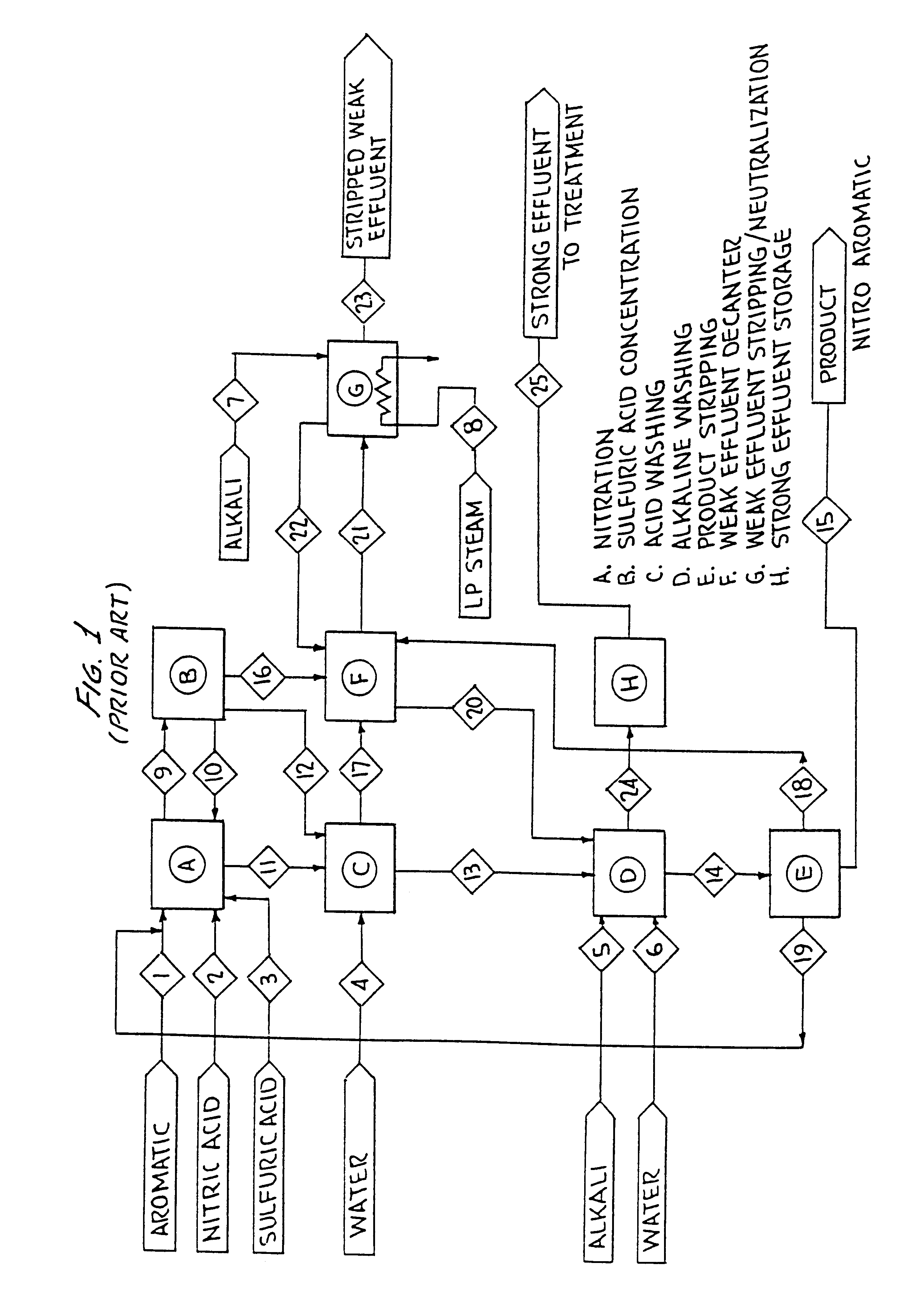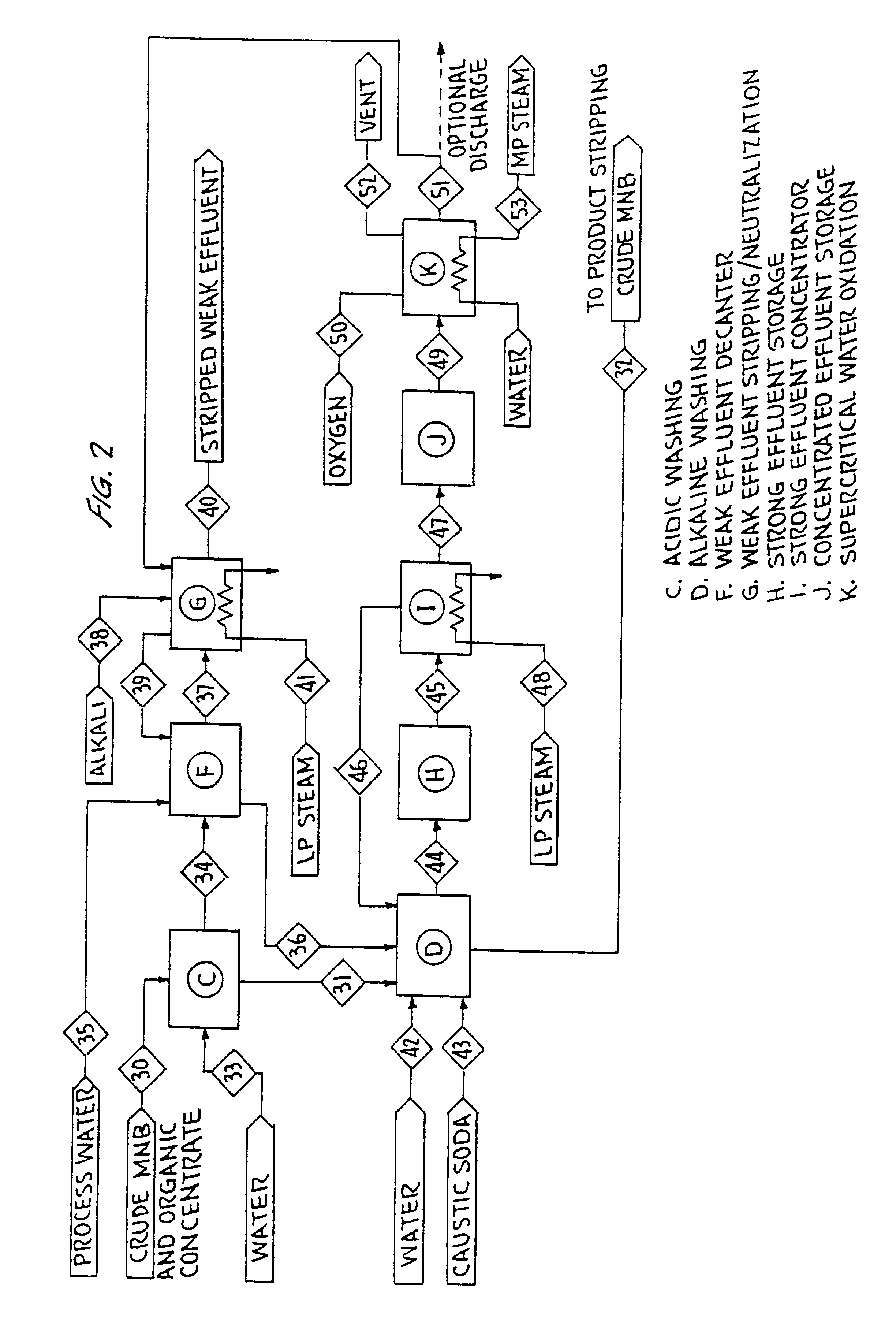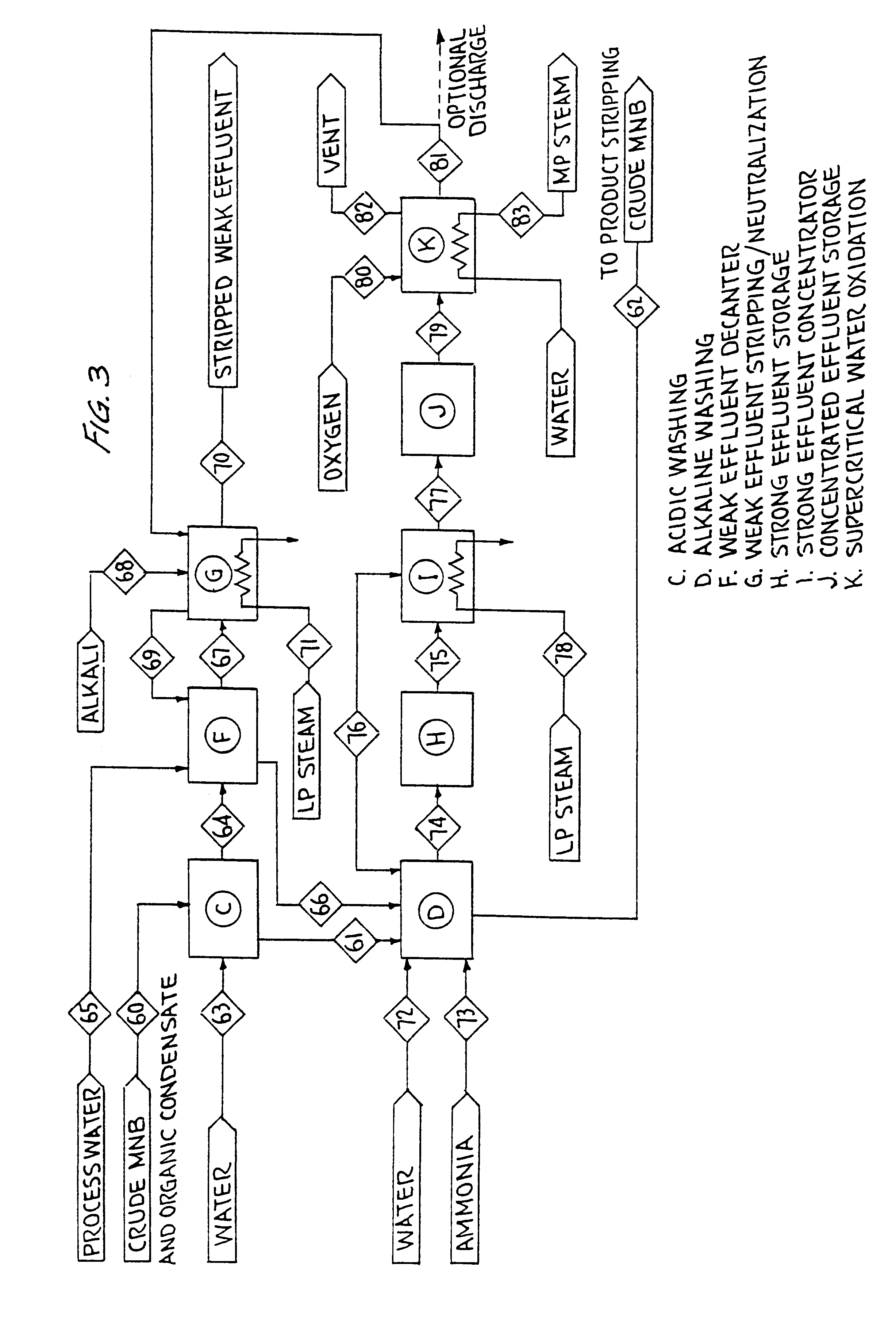Integrated effluent treatment process for nitroaromatic manufacture
a technology of nitroaromatic and effluent treatment, which is applied in the direction of water/sludge/sewage treatment, water contaminants, chemical industry, etc., can solve the problems of not being able to achieve widespread adoption of redwater treatment technology in the nitration industry, adversely affecting the performance of hydrogenation catalysts, and reducing the use of nitroaromatic washing. , the effect of reducing water and alkali consumption, reducing water and chemical consumption
- Summary
- Abstract
- Description
- Claims
- Application Information
AI Technical Summary
Benefits of technology
Problems solved by technology
Method used
Image
Examples
example 1
Caustic Soda Based MNB Washing
FIG. 2 shows an example of the present invention integrated with a MNB plant using sodium hydroxide as the base in alkaline washing. Crude MNB (stream 30) from nitration (A) is processed through an acidic extraction or washing stage (C), alkaline washing (D) and subsequently passed to benzene stripping (stream 32).
The acidic wash stage (C) is an important feature of the presently disclosed integrated process as it removes sulfuric acid from the crude MNB. If sulfuric acid were to reach alkaline washing (D), the strong effluent would contain sulfate, a compound that will form a scale under supercritical water oxidation conditions.
Strong effluent (stream 44) from alkaline washing (D) is sent to storage (H) and then to an effluent concentrator (I) (stream 45) where the nitrophenol concentration in the effluent is raised from about 2% by weight to about 6 to 8% by weight. Nitrophenol concentrations in industrial washing systems are typically maintained belo...
example 2
Ammonia Based MNB Washing
FIG. 3 illustrates a second example of the present invention integrated with a MNB plant. The process is essentially the same as that described in Example 1, with the exception that aqueous ammonia is used as the alkali source for washing. Ammonia is generally used where the spent alkaline wash water (strong effluent) is incinerated. In contrast to caustic soda, ammonia and the resulting ammonium salts produce no ash upon incineration, or other forms of oxidation.
There are a number of notable differences between caustic and ammonia washing:
1. Ammonia is a weaker base than caustic and thus ammonia based washing systems generally have lower nitro-hydroxy-aromatic extraction efficiencies. In MNB manufacture, extraction of mononitrophenol in ammonia washing is especially poor compared to caustic based washing.
2. Greater molar excess of ammonia is required than caustic for efficient nitro-hydroxy-aromatic extraction. Spent ammonia wash water may have from 0.2 to ...
example 3
Ammonia Based MNB Washing with Ammonia Concentration
In the manufacture of MNB, following washing, benzene is stripped from the crude MNB. If a live steam stripper is used, a significant amount of aqueous condensate is produced that can contain low levels of nitrophenols, in some cases at greater levels than can be tolerated in the weak effluent system. In this case, it is convenient to use the stripper condensate as make-up water to the alkaline washers. The ratio of stripper condensate to crude MNB typically ranges from about 0.05 to 0.09 kg / kg, much higher than the fresh water make-up rate shown in Examples 2 and 3.
As in example 2, FIG. 4 illustrates the present invention integrated with a MNB plant which utilizes ammonia in alkaline washing. However, ammonia distillation (L) has been added to the overheads from the strong effluent concentrator (I). In recovering a relatively concentrated ammonia solution, for example 10 to 15% by weight ammonia, a larger water make-up is allowed ...
PUM
| Property | Measurement | Unit |
|---|---|---|
| pressures | aaaaa | aaaaa |
| temperatures | aaaaa | aaaaa |
| extraction efficiency | aaaaa | aaaaa |
Abstract
Description
Claims
Application Information
 Login to View More
Login to View More - R&D
- Intellectual Property
- Life Sciences
- Materials
- Tech Scout
- Unparalleled Data Quality
- Higher Quality Content
- 60% Fewer Hallucinations
Browse by: Latest US Patents, China's latest patents, Technical Efficacy Thesaurus, Application Domain, Technology Topic, Popular Technical Reports.
© 2025 PatSnap. All rights reserved.Legal|Privacy policy|Modern Slavery Act Transparency Statement|Sitemap|About US| Contact US: help@patsnap.com



